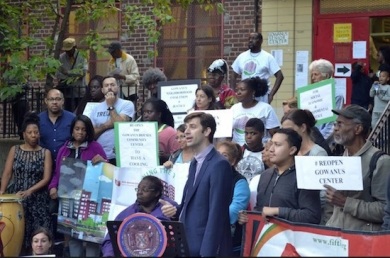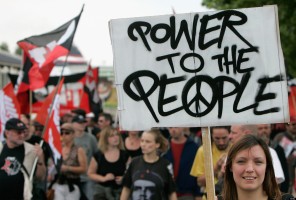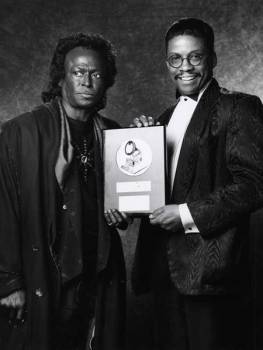What Is Your Value?

Finding people and organizations to pour into needy children and their communities is easy. Delivering meaningful progress in improving communities is much, much harder. Too many social initiatives proclaim to save underserved communities! Upon securing enough attention, these advocates shout louder about creating environments to improve everything that is ruining that community. Once the audience gets large enough, then references about returning to days-gone-by to build a better community overwhelms the emotions of any baby boomer with selective memories. Nevertheless, for building better communities, start with functional communities comprised of respectful people. But, what does that even look like?
Faith
Common beliefs regarding right and wrong is a logical starting place. While faith discussions quickly deteriorate into religious differences, constructive alternatives focus on observing faith as belief in a common set of ideals. Before religious conversion, common understanding is required. Otherwise, it is called a crusade and people die! Regardless, communication facilitates faith. In building a functional community, common values emerge to lead to agreement on the fundamentals for a better environment. Results require a structure that equips young and old with tools to reach common beliefs to benefit the community.
Growth
Community growth is a reasonable outcome for community improvements. Beyond wishes for prosperity, growth works well as a stepping stone to better communities. Additionally, economic development and education are often reasonable indicators for growth. But, those attributes also imply finite resources. In a community where numerous people will ultimately co-exist, not everyone will have equal access to resources. Too many communities and their residents believe, “I can only have more, if someone else has less.” To contradict such limiting beliefs, adults must demonstrate the ability and capacity to share to establish an example for the younger people. While advocating communal sharing of resources is most likely unreasonable, creating environments and safe spaces for people to exchange ideas and common experiences starts the path to trust. And best of all, when common experiences start to be shared in the spirit of having more, it is a short leap for shared trust to manifest additional community resources. Then, sharing objects logically results in sharing emotional well-being aspirations.
Legacy
As these first two legs establish a foundation of beliefs and common experiences, the third leg secures the community’s mutual improvement through background and attitudes. Spending one Saturday afternoon with a neighbor to check the box for community activity is clearly counterproductive. However, start connecting with hello. Then, have two adults from different families actually observe their children together sharing positive experiences. Parents can even set the example. The kids can keep their own toys, just acknowledge their time together. In this case, legacy can mean transferring knowledge from one generation to the next, or simply transferring examples from one grade to the next inside the same family. Socially, children learn from their siblings and immediate environment, as much as from their parents. A focus on growth through legacy allows for youngsters to benefit deliberately from their elders.
So, what is your value? Start with creating capacity and structure to continue important work in building better people inside communities. Consequently, these better people will be equipped to demonstrate faith, growth and legacy so that the community progresses toward delivering a vibrant, compassionate and enduring culture leading to better livelihoods in the future. Specifically, value is not necessarily an amount in this context, it is interpersonal assets building better people and communities. Teach tools, like empathy, to improve emotional character which results in improving the community’s quality of life. Then, despite communities’ previous perceptions, residents benefit from owning their individual self-improvement.
By Glenn W Hunter, Managing Director of Hunter And Beyond, LLC
Board Chair of Touchstone Youth Resource Services
To learn more (and even donate) go to TYRS.org
Which Character Are You?

Great stories rely on great characters! Particularly, the young, and young at heart, connect with certain stories because they emotionally identify with specific characters. Whether a given character fills the role of hero, villain, buddy, moral compass, or narrator, their connectivity reveals relationships. Ultimately, these relationships become the foundation of a specific group, community, or culture. Whether characters are real, or make-believe, individuals identify with certain roles and embody the character in personal scenarios. It is perfectly normal, and healthy, for a kid to pretend to be a favorite superhero! So, which characters reflect the virtues that a defined community wishes to perpetuate? Furthermore, how does a community encourage realistic social growth as a result of stories and characters that its members embrace?
Collaborative Community
A community inherently reflects the living, breathing characteristics of its people. In building community, characters inevitably interact, whether positively or negatively. The deeper the characters, the deeper the stories, and consequently the deeper the community. To maximize everyone’s benefit, the community’s assorted members must communally and collectively reveal the story. The hard part is introducing the tools and framework for effective collaboration.
For starters, fundamental communication skills like listening, reflecting and sharing are required. Embracing emotions like empathy and compassion helps, too. While the community’s leadership my set the tone, the rank and file perpetuate the environment. The skills associated with developing the emotional foundation must be regularly communicated and reinforced for success. For example, children that engage in group activities that feature positive interactions benefit the most upon modeling behaviors that facilitate additional positive interactions. Fundamentally, developing and exercising teamwork equips collaborative communities to grow individuals’ progress.
Inspiring Individuals
Unsurprisingly, teamwork and collaborative progress require intentional effort by the community and its leadership. Cooperation, empathy, and measurable results are all admirable characteristics for developing better connected communities. To ignite such productive traits, a results-oriented culture must emerge that celebrates individual contributions for the common good. These character victories then become part of the community’s stories. This process leads to establishing heroes who are necessary for any great story.
These heroes emerge as they demonstrate characteristics that the developing community admires. Conversely, villains appear as personalities that seek to disrupt the growth. Comic relief characters add levity to activities that progress toward desired outcomes. The voice of reason perpetuates the logic that guides functional communities. Besides revealing characteristics that contribute to communal traits, these roles combine perspectives and skills to reach optimal resolutions. Ultimately, building community requires balanced and cooperative interactions for success.
Takeaways
While observing children seems easy, improving their behavior with better experiential examples is hard. The same is true for adults. To create a great story, complex characters must be faithful to roles that the community recognizes. Every community member adopts a role that contributes to establishing that community. By selecting, inspiring and rewarding more positive characters, the community promotes positive traits in its environment. The result is better contributors, and more importantly, better leaders.
Nevertheless, protagonists and antagonists are too simple to describe evolving characters in complex stories. Good guys, bad guys, anti-heroes, and corrupt authority figures now dynamically blend together depending on circumstances. The greater good no longer provides a simple foundation with regards to delivering more functional societies. The challenge is developing positive characters that contribute to their defined community, who then create even better stories as future leaders. So, what character are you? The more important question is: what characters are developing in your story to create more effective and productive communities?
By Glenn W Hunter, Managing Director of Hunter And Beyond, LLC
Board Chair of Touchstone Youth Resource Services
To learn more (and even donate) go to TYRS.org
The Best Ability

Competitors always look for an edge. Coaches routinely deliver inspirational speeches peppered with motivational quotes. “The best ability is availability” is a particular favorite. It encourages that anyone can contribute. An individual’s presence can deliver critical results. Contributions emerge from all positions, all roles, all skill levels. Then, leaders are responsible for maximizing production from the assorted components under their guidance. Great coaches win championships when they harness all available talent and skills, then expertly guide them to a communal victory. But first, all components and resources must be available.
Teamwork
Whether the leader is a football coach, a life coach, a business coach, or a CEO, getting team members to contribute individual skills for a greater, communal purpose is necessary for success. The team cooperates to achieve milestones which lead to subsequent goals. The process begins with whom is present. Then, through explicit training and guidance, accountability develops so that team members and their leaders develop trust and common focus. The team’s success depends on the entire group’s ability to galvanize resources and skills to specific and measurable goals.
Whether the prize is a state title, or the highest grossing sales territory, multiple contributions are necessary for the victory. Teams that share in the struggle, share in the rewards. Members must be present, accountable, and contributing to achieve success. Likewise, leaders must have the ability to articulate a clear vision of success. For team members to be available, they need a reason to show up. They require inspiration to contribute upon entering the battle. The leader can establish the goal. The rewards can be articulated and acknowledged. But, ultimately team members must be available, then willing to sacrifice for each other.
Mentoring
Along the path to achievement, successful leaders transform from boss to mentor. Effective leaders’ motivation cannot be solely for their own glory. Individual talent and strong will undoubtedly secure victories. But, the perseverance required for long campaigns require endurance and assorted contributions. All participants must be willing and able to step in and contribute at any time. That time maybe during preparation or behind the scene offering encouragement.
Nevertheless, that time will come when a role player needs to intercede and the leader is responsible to have that individual prepared. Enthusiasm does not satisfy that requirement. Coaching that includes demonstrating winning characteristics, being genuinely and individually interested, investing personally in every individual’s specific development, all converge to build the environment where every single contributor is willing and able to do their part. Furthermore, each member has demonstrated willingness to prepare and to deliver their talent and heart for the team’s success. Then, when the time comes for them to contribute their ability, they are available!
Takeaways
Curiously, great mentors also learn from their mentees. Collaboration is a lot like synergy. Results exceed your inputs. Prioritizing individual development across all talent levels makes the difference in erecting the required teamwork for major victories. Competition is fickle. The best team does not always win. Sometimes, simply the best team on that specific field at that specific time secures the crown. But, to be on the championship field, the whole team must have prepared to be there. The team galvanized the winning culture. Effective leaders guided them. Contributors engage throughout the process from preparation through performance. Nevertheless, the ultimate ability is availability. The championship team needs to be present and accountable before the time comes to claim the rewards. Start preparing now to be available for the next victory!
By Glenn W Hunter
Managing Director of Hunter And Beyond, LLC
What You Think You See

“What you think you see is not really what you see!” is a personal favorite quote from the Los Angeles Riots. A juror first uttered the words following the verdict, and the words dramatically resurfaced after the actual rioting began. For this purpose, the idea is not political, racial, or legal. The quote focuses on mindset! What a juror first said to justify her de-sensitized perspective of police brutality, morphed to articulate an individualized, alternate set of facts. A looter re-introduced the statement to explain her participation in the ensuing devastation. She clearly presented her personal interpretation of facts. She owned her narrative!
Perception
Amazingly, different people can experience the exact same event, at the exact same time and leave with completely different interpretations of what happened. Whether it is a physical vantage point, a cultural lens, or personal history that filters information, every individual singularly experiences any given event. This revelation becomes particularly important when birthing a movement to launch change.
Facts matter, but interpretation and coinciding actions drives activity. Consequently, to facilitate effective change, events must impact perception. What people say is important, but what people hear is more important! Consequently, to create lasting impact in any given situation, the narrative must benefit listeners. Effective speakers coordinate their own best interest to persuade understanding of their broad audience. Everyone receives a slightly distinctive message. But, aligning aggregate received messages with the speakers’ vision facilitates change.
Influence
Creating social movements require delivering a narrative in which others will subscribe. Foundationally, a singular, communal truth relies on aligning individual perspectives toward the desired message. Progress results from conveying a viewpoint that empowers different perspectives to arrive at a similar conclusion. Consider two travelers on a road trip approaching a gas station late at night. The driver suggests filling up the tank. That traveler sees a chance to swap drivers so that she can rest. The other traveler sees the opportunity to load up on snacks because they still have more driving to do. In one stop, they both gladly meet their fundamental needs. The result is a trip that continues on time and with reduced anxiety.
Aligning points of view impacts goalsetting, as well as the ability to achieve results. A point of view also dictates how success is measured. Consequently, upon understanding various perspectives and their stake in the outcome, crafting a message that appeals to multiple parties gets easier. Effective narratives successfully rally followers to make their individual contributions as part of a greater good. Essentially, each individual works toward what they really want to see. And, these individuals purse their agenda under the covering of communal and aligned efforts.
Takeaways
To achieve communal goals, articulate clearly the desired results that benefit individuals. Furthermore, individuals must contribute individual narratives which will align with the framework that delivers desired results. Goals do not have to be admirable, conventional, or reasonable. They have to be perceived as attainable! Individuals perceive relevance to the extent that their contribution advances their individual agenda. Unfortunately, that mindset opens the door to manipulation by someone with a grander vision and a more convincing narrative. Essentially, “Anyone can get what they want as long as they help enough other people get what they want.” The risk is succumbing to another’s agenda. To contribute to a bigger cause, own your narrative. Be ready to live with the results.
By Glenn W Hunter
Managing Director, Hunter And Beyond, LLC
Whose Ways Are The Best Ways?

Wisdom comes from good judgment. Good judgment comes from experience. Experience comes from mistakes. Mistakes come from bad judgment. ~Chinese proverb
A young student sternly resisted coaching that emphasized him improving his discipline. Stereotypicaly, the youth smugly proclaimed that the old ways do not work anymore. The hilarious irony is that preceding generations said the exact same thing! The best practices of any particular generation over another generation are irrelevant. Maturity emphasizes wisdom. Youth worships innovation. Both perspectives are right, and self-serving. Wisdom is slow and innovation is reckless. Unfortunately, the two perspectives rarely align. Nevertheless, progress continues. Yet, how do these opposites manage to coexist?
Wisdom
Maturity brings a sense of deliberation. A student boastfully tells his teacher that his programmable calculator can solve the math problem. The teacher emphasizes the importance of thinking. The student’s priority is the right answer. The teacher wants students to understand the principle because students will need to apply earlier principles to learn new ones. The student wants to get his A so that he can he can enjoy his rewards for good grades. Regardless of which approach prevails, the point is to align goals. Wisdom is an accumulation of knowledge and experiences. It involves success and struggle. Each generation endures struggle. Developing the tools to engage and overcome struggle is essential to growth. Shortcuts are great until someone needs a bridge to go farther.
Innovation
However, innovation creates bridges. Applying tools and experiences that result in unprecedented thinking solves future problems. Most certainly, the past clearly teaches that the future presents new problems. However, innovation results from making mistakes and correcting them. It rewards taking established knowledge and improving it. No one gets an iPhone without someone first having a Palm Pilot. Mistakes are learning opportunities. Judgment can only be developed through trial error. Innovation provides new advancements, yet fundamentally they produce new problems that must be solved. Recklessly pursuing progress without embracing the obstacles along the way leads to ignoring the lessons that set the foundation. Skyscrapers are not built from the top down.
Takeaways
Ultimately, learn the rules and then break them! Mistakes are opportunities to do it better. Upon making enough mistakes, the result can be a better opportunity. Viagra was a failed attempt for a better drug in treating high blood pressure and a certain heart condition. But, the pursuit of perfection could have easily stopped Viagara’s other benefits from ever being realized. Nevertheless, pursue the right answer. Also, pursue the knowledge that accompanies it. Accept the wisdom of earlier lessons, and their mistakes. Embrace the new knowledge that results, as well as the pain of failure. Coaching facilitates this purpose. The old ways may or may not be best, but they provide the path to using experience for the greater good. Learn. Fail. Grow. Repeat.
By Glenn W Hunter
Managing Director of Hunter And Beyond, LLC
We Broke It Better

“I played something that was technically wrong…” as shared by legendary jazz pianist, Herbie Hancock, referencing a performance with mercurial jazz giant, Miles Davis. Hancock continued “… I thought I had just destroyed everything. Miles played some notes and he made my chord right. I judged what I had played; Miles didn’t.” Despite his immense talent, Hancock was upset after making a musical mistake despite the piece’s complexity. Equally, he was concerned about the error’s consequences in front of a notoriously exacting taskmaster. But Davis methodically approached Hancock in the middle of the song, before an enormous crowd, then used his horn and moved the music back on track. The outcome was better. This is pure leadership!
Reason for Being Here
Every contributor has a specific purpose. Whether overseeing a complex international operation, or being that guy where “You had one job to do!”, acknowledge the reason for the selection. Sometimes the reason is simply availability. Then, be available. Other times, it is specific set of skills the very few people possess. Nevertheless, embrace the fact that additional gifts can be applied to the most basic responsibility. If the role involves managing others to achieve specific goals, then enforce the processes. If the role includes leading other leaders, then articulate strategy and expected outcomes.
In all situations, specify necessary skills to accomplish the assignment, then permit unique imagination. Leaders prepare for unexpected contingencies by being alert and receptive to innovating for better outcomes. Embrace unforseen possibilities in pursuing goals. Mistakes happen. Creativity corrects them. Value all contributions and deploy them with a singular focus on success.
Contribute Unique Gifts
After accepting an assignment and launching its execution, prepare to deploy all available assets in accomplishing the task. Expect to manage contingencies. A business task force may require a marketing expert. Instead of grabbing the nearest MBA, identify a proven problem solver. Effective leaders identify the most effective option for specific tasks. A proven problem solver with marketing experience, and an MBA should do the trick.
Bring them on board with clear expectations of maximizing their gifts. The most obscure life experiences have value. Great leaders inspire followers to exceed their individual expectations. Transcendent experiences result when every contributor brings all their attributes and is ready to contribute them. According to Shakespeare, “Some people are born great, other people have greatness thrust upon them.” Don’t be that guy who is unprepared to deliver when greatness is thrust upon him.
Conclusion
Returning to Miles Davis’ intervention, his correction produced a more innovative and musically interesting results. Hancock was relieved and Davis seized another opportunity to demonstrate his immense genius. Davis affirmed Hancock’s reason for being there while simultaneously validating his enormous talent.
Too often, in the eagerness to contribute, the journey’s purpose gets lost. While the destination is important, identify other benefits within the mission. Pursue goals with intense focus and attention, yet seize growth opportunities. Unexpected detours occur. Still, pay attention to the journey. The experience is equally important as the accomplishment. Embrace errors. Then, learn from and build upon the genius of innovative solutions. The result invariably leads to improved processes benefitting future accomplishments. But first, break it better!
By Glenn W Hunter
Managing Director, Hunter And Beyond, LLC
Three D’s For a 4.0

What is the result of achieving A’s in every class? Any school community recognizes a 4.0 grade point average as the pinnacle of achievement. This academic goal is typically treated with reverence and awe. It implies perfection in that student’s performance that far surpasses ordinary classmates. So, how does a D impact a perfect report card. Furthermore, how can three D’s result in a 4.0 grade point average?
Desire
The three D’s specifically point to essential characteristics that result in excellence! High performance is a process. The process’s first step simply is a desire for excellence. Articulating a goal precedes achieving it. But real progress requires passionately pursuing it. Desire is the foundation. From an academic perspective an unyielding fixation on maximum performance creates the necessary mindset for top grades. Competition is always at every winner’s heels. Because great results require great efforts, desire ultimately fuels the intense focus to achieve any goal. Unyielding desire sets the foundation to prepare for every assignment, every test, and every milestone that moves toward individual victory. Regardless of the contest, the will to win paves the road toward achieving the highest performance levels.
Determination
Beyond desire, establishing the prescribed steps for superior performance requires another D. Determination involves the necessary work. Beyond wanting an A, executing the process of earning an A requires a higher level of commitment. Each step must be identified and constantly re-evaluated. Determination means fully embracing the established plan. Exceptional performance takes high-achieving principles and puts them into action. A straight A student must study, then execute when tested. Like all competitors, straight A students have options, temptations, and other priorities. Nevertheless, their determination keeps their priorities fixated on the identified goals. Beyond the dream is the work that must be performed while awake. Determination ensures that the work gets done to earn the targeted results.
Discipline
While determination manifests itself in execution, discipline equates to consistency. For high performers, a good grade is only a data point. Excellence reflects repeated behaviors. However, top performance demands excellence and longevity. Winning habits creates great performers. Furthermore, repeated excellence delivers top champions. The 4.0 student repetitively achieves top results. Discipline empowers the individual to pursue, accomplish and repeat top results at every occasion. Ultimately, discipline is the repetition of successful tactics that result in achieving the desired goals.
According to Aristotle, “We are what we repeatedly do. Therefore excellence is not an act, but a habit.” The three D’s that lead to a 4.0 reflect habitual excellence. It starts in the mind and manifests through intentional action. Grades are often mistakenly seen as the product of excellence. In reality, grades reflect the excellence which produced the result. Grades merely are the score. But, the process of earning them is the habit that transforms individuals. And by transforming individuals, high performance can empower opportunities, practices, personalities, and communities. Aspire for excellence. Then, deliver results. Unleash excellence that will transform an enlarged community!
By Glenn W Hunter
Managing Director of Hunter and Beyond, LLC
Train Up A Teen

Mark Twain said, “When a child turns 12, he should be kept in a barrel and fed through the knot hole, until he reaches 16…at which time you plug the hole.” The Old Testament raises the issue of disobedient children. And, today because we have the internet and artificial intelligence, children are supposed to know better and be more obedient. Regardless, where the blame lies across generations for children, teens and young adults are still reluctant to accept advice and wisdom from their elders. Instead of yelling louder, perhaps authority figures should listen more. Equally important, they should listen earlier. And, that listening from authority figures begins with parents, teachers, and youth leaders. By modeling listening behaviors, young people will be more likely to apply listening skills. Too often, youth cannot hear words from adults because their actions are too loud.
Engage
Dialogue by definition is bilateral. Social Emotional Learning (SEL) is a tactic that develops young people by cultivating specific communication tools. This tactic delivers tools to young people to articulate their pain. A straightforward example is the focus on bullying. SEL provides tools to help process the blizzard of emotions and destructive behaviors associated with youth aggression. Power, control, frustration are all elements of bullying. By engaging youngsters they have opportunities to begin processing root causes of these activities. Furthermore, they gain insight to their consequences.
To promote growth, authority figures must acknowledge and accept the privilege to teach, guide and mentor young people. Too often teachers assume they are right because they have spoken. Through emotionally connecting with young learners, teachers forge a path for truth to emerge. They earn the privilege to be right upon achieving awareness that students received the information. Fundamentally, engagement establishes an emotional connection that results in communicating information to a listener equipped to process it.
Respond
Assuming authority figures know best is a slippery slope, especially when interacting with young learners. Responding with right answers is too simplistic. Assuming away the learners’ emotional state because rational facts are presented is a disservice. Treating academic facts as irrefutable truths compounds the problem. Instructors ignore their learners’ emotional filters at their own peril. Students cannot accept facts if they do not trust their source. More importantly, they cannot respond properly to new information without an emotional connection to the facts. If the communication filter is clogged with learners’ confusion, pain, insecurity and hopelessness, then the facts never reach their understanding.
Pressures to understanding, embedded in young people, have changed dramatically in the last generation. Today’s adult parents of school age children are too old to have been cyber-bullied in elementary school. The argument that bullying is bullying is the equivalent of saying that a library’s card catalog has the same research capacity as Google. Sensitivity to the differences in acquiring and processing information is essential to communicating and educating. Teachers who exercise insight to students’ social-emotional needs have a tremendous advantage in conveying information. Developing and exercising abilities to identify and respond to felt needs is an advantage resulting in better learners.
Takeaway
Training young people to learn and apply their knowledge productively is an old priority. “Train up a child in the way he should go; even when he is old he will not depart from it.”, is a lesson from Proverbs 22:6 (English Standard Version). Communicate, listen, respond, listen some more. Listening is not the pause while waiting for the next turn to talk. Empower students to process information that they receive, not just accept the authority’s experience as the only option. Even if the authority’s path is best, it does not necessarily reflect the individual youngster’s reality. Teaching is empowering learning to occur; it is not spewing knowledge. Learning socially, emotionally and intellectually requires delivering knowledge using proper tools so that intelligence transfers. The youngsters’ ability to progress and function depends on it.
By Glenn W Hunter
Managing Director of Hunter And Beyond, LLC
The Urgency of the Tyrant

The Tyranny of the Urgent is a common phrase referring to people held hostage by immediate problems that they face. People cannot perform important tasks because they are trapped by urgent ones. Long term benefits are at the mercy of short-term demands. However, an equally counterproductive and evil relative also lurks. The Urgency of the Tyrant is when someone else’s problem becomes your problem. And, that someone has authority! Where’s coaching when you need it?
Lack of Planning
“Lack of planning on your part does not constitute an emergency on my part!” This clever quip is empowering until the poor planner exercises their authority. For example, the boss arrives late at the office following an early morning “networking meeting” with his golfing buddies. The report he needed two days ago, that he neglected to tell anyone, is now the nearest subordinate’s problem. The Tyrant has struck!
The subordinate cannot plan for such contingencies. They make the hard decision and sacrifice another priority. Consequences emerge from missed deadlines. Other leaders and peers question the subordinate’s competence. However, the subordinate’s best defense is contingency planning that anticipates the reckless leader. Enlist colleagues to absorb the resultant overflow that the Tyrant created. Likewise, be prepared to reciprocate among those colleagues. Reckless Tyrants do not discriminate. They wreak havoc from their egomaniacal vacuum. Defeat the Tyrant’s lack of planning by overcompensating with superior proactivity among a community of teammates.
Manage Emergencies
What can victims do? Getting angry or vengeful certainly does not help. Negative emotions drain time and energy from fulfilling the impossible assignments. To survive, reprioritize assignments quickly. According to Gene Kleiner, “The more difficult the decision, the less it matters what you choose.” Choices fall in the “Damned if You do, Damned if you don’t” category. The choice is real; so are the consequences. Choose anyway.
However, long-term issues remain. Once a subordinate performs a miracle, the Tyrant returns with equally impossible tasks. It is his true nature. Like most tyrannical regimes, escape is an attractive option. The tyrant already has authority and no incentive to change. Subordinates have alternatives. Upon considering equally brutal choices, ongoing submission is a possibility. But, finding a new environment, galvanizing fellow oppressed colleagues, standing up for individual respect are also options. Explore possibilities that maximize personal attributes for individual gain. Consequences maybe difficult, but that cannot silence the right for dignity.
Takeaways
Tyrants emerge in many types of organization. Often, bullies are bullied themselves. However, loyalty to an oppressor is really enslavement! Explore options. Coaching helps. Prepare for promotions, develop new skills, explore different life choices, pursue personal happiness. Find new inspiration that empowers fulfillment beyond the Tyrant. Waiting for the oppressor to lose creates additional burdens. Having courage to escape oppressors because skills, talents, and value exceed current situations builds a path to liberation. A Tyrant has power through fear. Overcome the fear through individual efforts. Then, facilitate community. Ultimately, pursue conquering the abuse, then own your personal value.
By Glenn W Hunter
Managing Director of Hunter And Beyond, LLC
ABO: Attitude Behaviors Outcomes

Getting teenagers to achieve meaningful changes for their future benefit is an enormous task. Young people routinely alter their life trajectory every ten, social media – driven, seconds. Nevertheless, creating positive change happens. Goals and timelines are established. The journey begins. However, progress is impossible without a strong foundation. Regardless of age, obstacle, or circumstance, significant achievement only occurs with a strong foundation. Three cornerstones establish the structure to change teenagers, parents, professionals, or anyone else interested in progress.
Attitude
Considering young people, if “attitude” and “change” are seen together, the word, “bad”, is nearby. However, attitude is simply, “a settled way of thinking or feeling about someone or something, typically one that is reflected in a person’s behavior.” Most importantly, attitudes can change. Individuals must want or be incented to change. Nevertheless, change is possible. To improve, it is necessary. By creating a positively accountable group, peer pressure can help facilitate growth-oriented change. Daily reinforcement of group benefits and goals gives the team permission to police itself. When “it’s all about us kids”, they own the improvement. They own the results. Their attitude ignites their winning drive! The leader merely points it in the desired direction.
Behavior
“If you can believe, you can achieve” is a clever quote. The achievement part requires work. Changing behavior requires work. Establishing structured activities is essential to creating a framework where that work happens. Different habits are introduced. The habits do not necessarily have to be new. But, they must be different than previously ineffective habits. Simple actions like choosing a different seat, selecting the first activity, picking their own nickname qualify. Individual ownership within the group framework instills ownership of progress. When every individual inside the group owns a decision that leads to group success, individual behavior matters. Furthermore, members become eager to exercise their new power so that their next behavior matters. Personally, each contributing individual can own the results.
Outcome
The foundation’s final piece features consistent focus on the ultimate result. Each individual must know their contribution matters. Everyone must share a stake with their teammates. This mindset only develops through consistent reinforcement that is established early and communicated often. Measurable goals work best. While individual goals create ownership, emphasizing cooperative benefits encourages teamwork. The rewards do not have to be equivalent. They must be individually meaningful. And, the rewards must be celebrated! Established outcomes are essential to successfully executing this process. Leaders who mutually serve the individual and the team reap the greatest benefits.
Takeaways
This process works for kids. It works for adults. Communal success and ownership of results is culturally hard-wired. Leaders do not need to dictate the result. Effective leaders are secure in knowing that they drove the result. They also know that their followers are ultimately responsible for executing the result. The purpose is success, not credit. Attitude, behaviors, outcomes represent the foundation. Reinforcing this foundation builds a stronger structure. If young people can be successful with this framework, imagine the success available to them when the stakes are higher!
By Glenn W Hunter
Managing Director, Hunter And Beyond, LLC